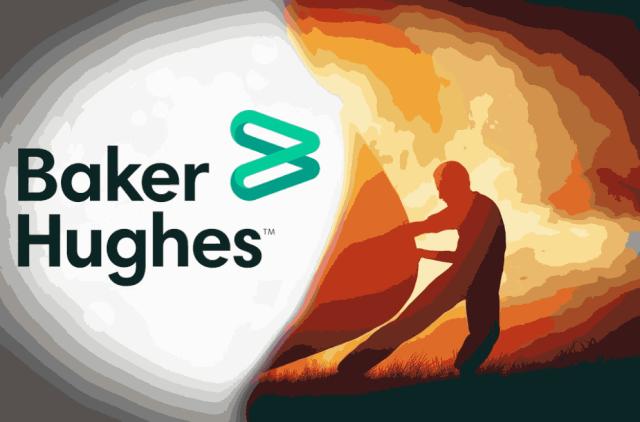
The changes not only reflect the change in company ownership but also a new strategy for Baker Hughes. (Source: Baker Hughes Co./Shutterstock.com)
Baker Hughes made its separation with General Electric Co. (GE) official on Oct 17 by unveiling a complete overhaul to the company’s image.
“Welcome to the New Baker Hughes,” reads the Houston-based company’s website.
After a brief stint as Baker Hughes, a GE company, the oilfield services company with a history dating over a century will now be known as Baker Hughes Co. Additionally, the company’s stock will begin trading on the New York Stock Exchange Oct. 18 under the new symbol “BKR”.
Despite already having a storied history that dates back to 1907, Baker Hughes has seen some twists and turns so far this decade.
Shortly before the oil market crash of 2014, Baker Hughes agreed to a $34.6 billion buyout offer of all of its shares by Halliburton Co. The merger, which would have been transformational to the industry, ultimately failed due to antitrust issues and was announced terminated in May 2016.
A few months later, Baker Hughes agreed to be acquired by GE, which merged the company with its GE Oil & Gas division following close of the acquisition in 2017. Roughly a year later, however, the Boston industrial conglomerate announced plans to fully separate its 62.5% interest in Baker Hughes over the next two to three years in a June 2018 release.
GE followed through on those plans in September through a $2.7 billion share sale that reduced its ownership in Baker Hughes to 38.4%, ultimately losing majority control in the company.
The Oct. 17 changes not only reflect the change in company ownership but also a new strategy for Baker Hughes as the company also recently revealed a new logo that reflects its rebranding as an energy technology company.
After decades of a blue brand, the Baker Hughes company logo now consists of two green arrows merged into a geometrical shape known as a mobius.
“Our logo symbolizes the spirit and purpose of the new Baker Hughes—to take energy forward, making it safer, cleaner and more efficient for people and the planet,” the company said.
Baker Hughes currently operates in over 120 countries with a roughly 67,000 employee base.
Recommended Reading
E&P Highlights: April 22, 2024
2024-04-22 - Here’s a roundup of the latest E&P headlines, including a standardization MoU and new contract awards.
Technip Energies Wins Marsa LNG Contract from TotalEnergies
2024-04-22 - Technip Energies contract, which will will cover the EPC of a natural gas liquefaction train for TotalEnergies, is valued between $532 million and $1.1 billion.
Galp Seeks to Sell Stake in Namibia Oilfield After Discovery, Sources Say
2024-04-22 - Portuguese oil company Galp Energia has launched the sale of half of its stake in an exploration block offshore Namibia.
Aker BP’s Hanz Subsea Tieback Goes Onstream
2024-04-22 - AKER BP’s project marks the first time subsea production systems have been reused on the Norwegian Continental Shelf.
US Drillers Add Oil, Gas Rigs for First Time in Five Weeks
2024-04-19 - The oil and gas rig count, an early indicator of future output, rose by two to 619 in the week to April 19.



